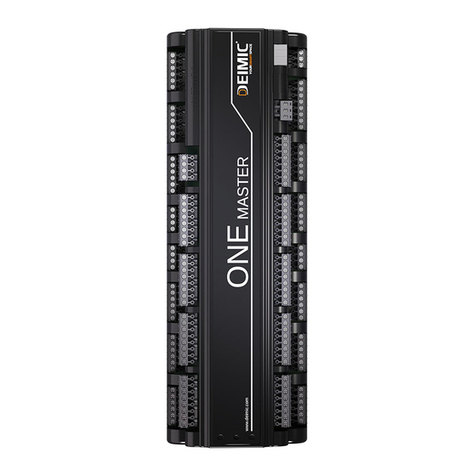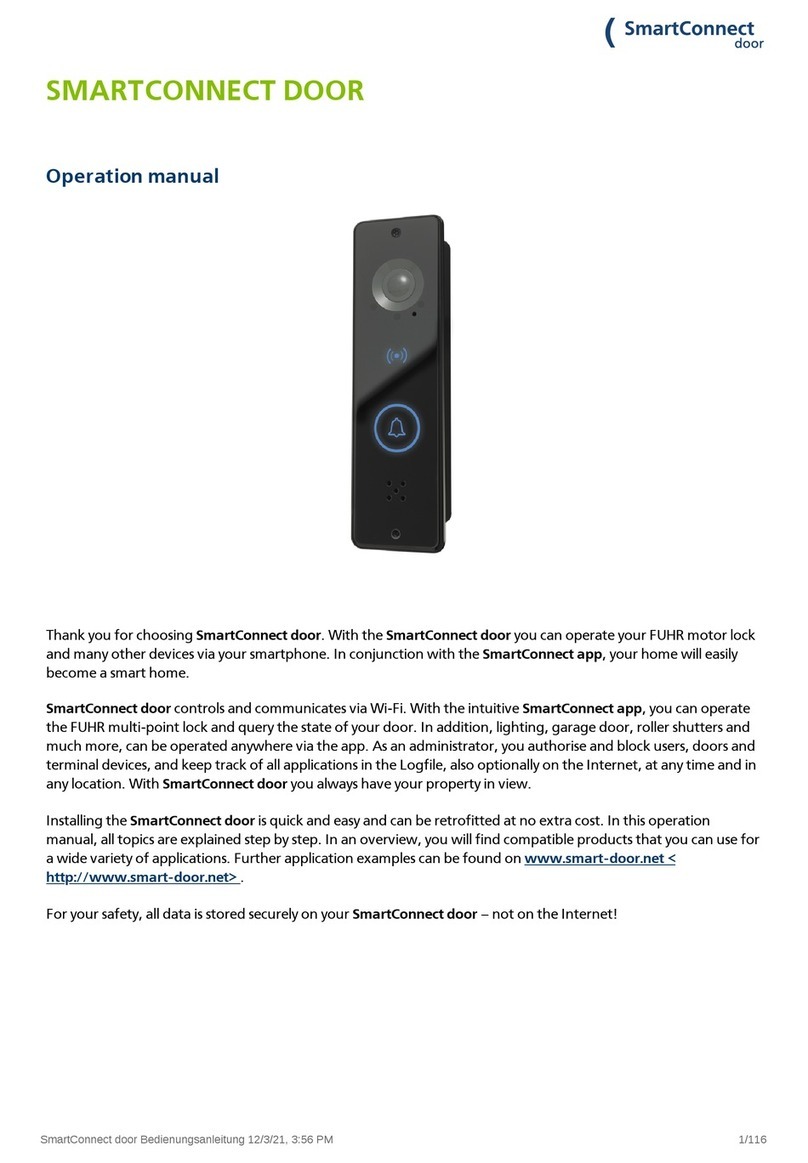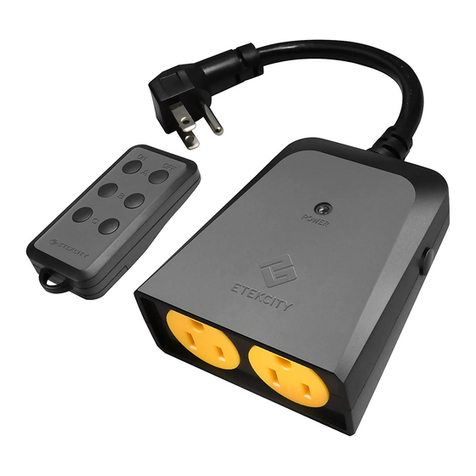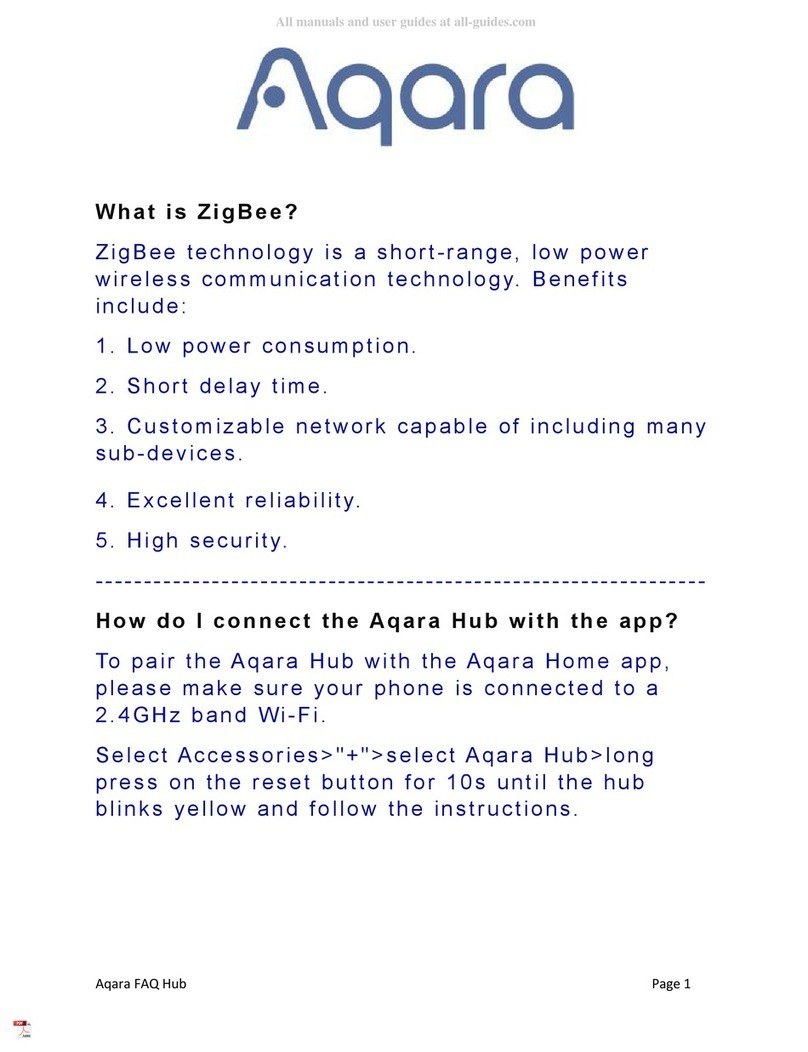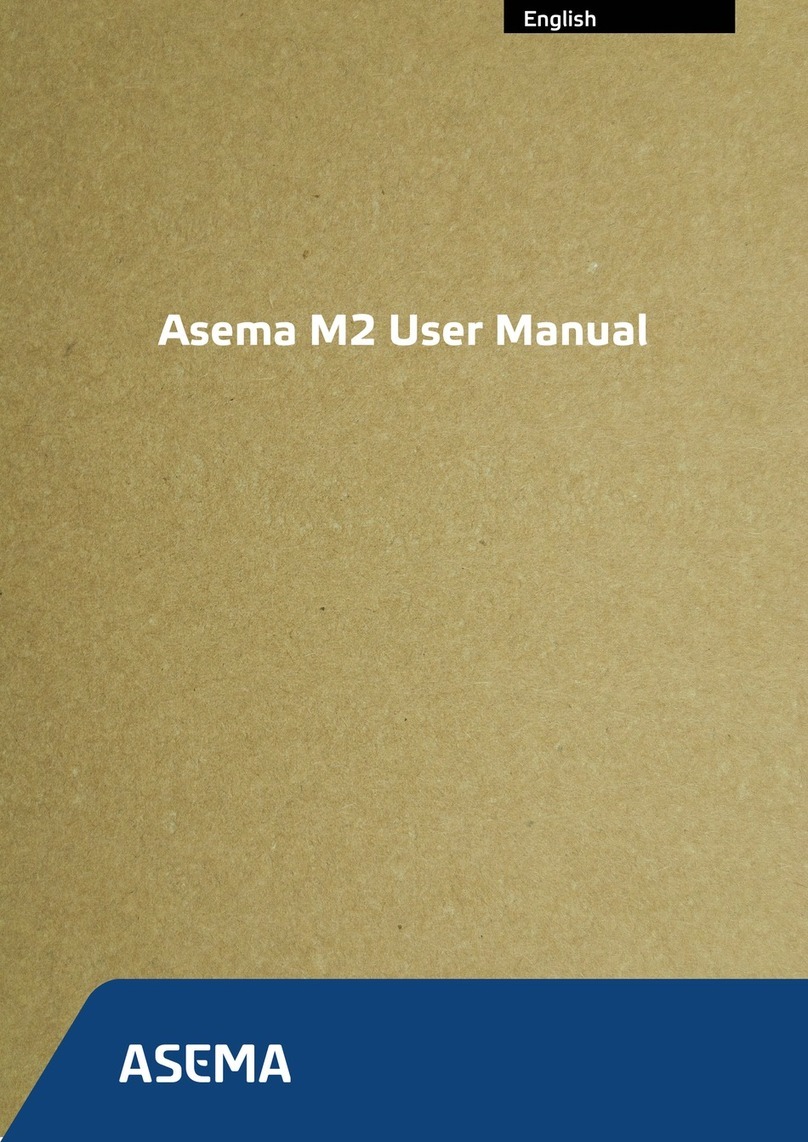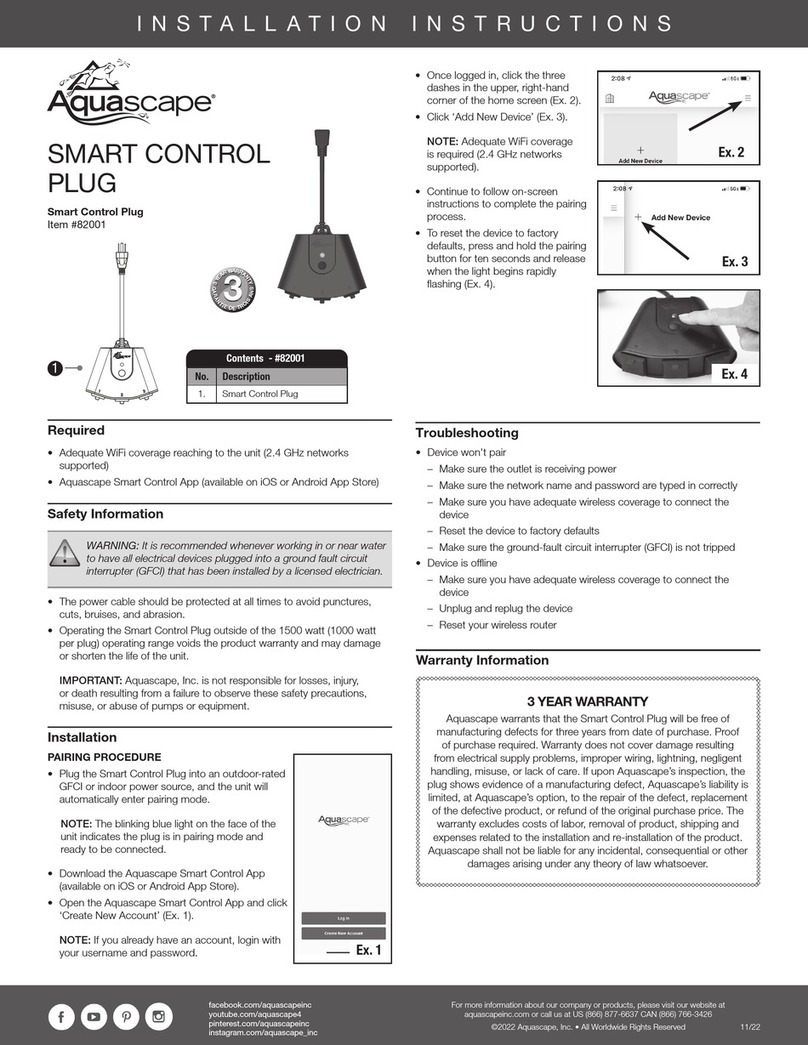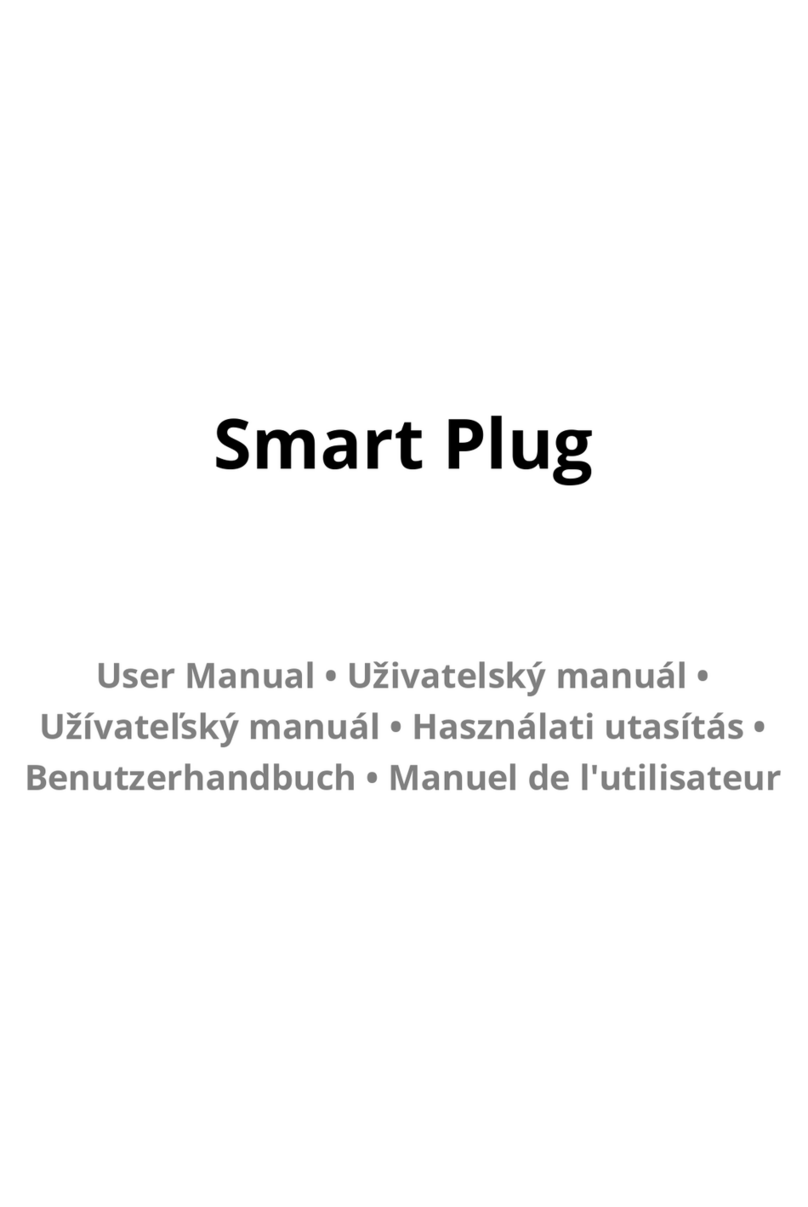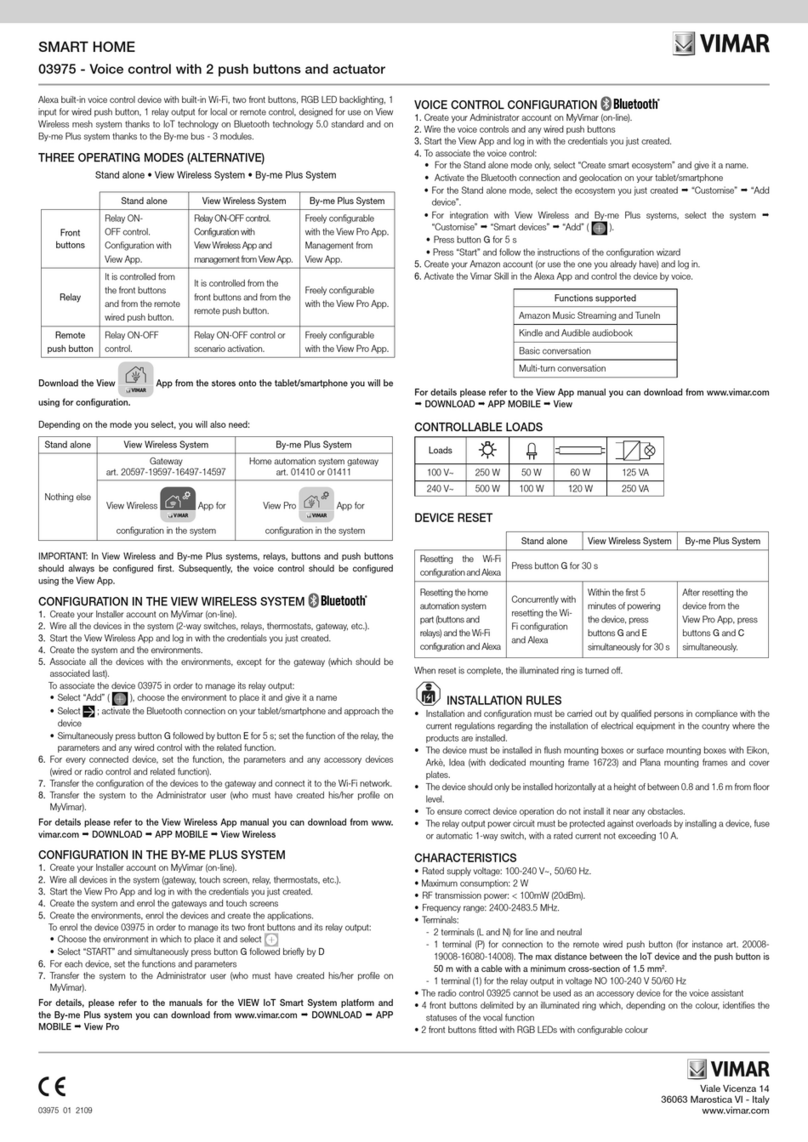Electronique du Mazet ECHODIA ELIOS User manual

Instructions for use
&
Technical description
Please read these instructions carefully before using your new device!
This manual is an integral part of the device and must be kept until it is
destroyed.
This equipment has been designed and manufactured for use in otologic
diagnosis. Use is restricted to professionals who have undergone appropriate
training.
If you have a problem or do not understand this manual, please contact
your distributor (see stamp on the last page) or contact Électronique du
Mazet at:
Tel: (33) 4 71 65 02 16 - Fax: (33) 4 71 65 06 55
A brand of

User guide ELIOS
ECH001XN111-A4 –07/2022
2
Table of contents
Information and safety...........................................................................................................................................................5
1.1 About this manual....................................................................................................................................................5
1.2 Presentation of the device........................................................................................................................................5
1.2.1
Intended Use ..............................................................................................................................................6
1.2.2
Target population.......................................................................................................................................6
1.2.3
Expected performance ...............................................................................................................................6
1.2.4
Contraindications.......................................................................................................................................6
1.2.5
Side effects.................................................................................................................................................6
1.2.6
Units of measurement ................................................................................................................................7
1.2.7
Accessories ................................................................................................................................................7
1.3 Warnings..................................................................................................................................................................8
1.4 Potential risks ..........................................................................................................................................................9
1.4.1
Shutdown of the device during its operation..............................................................................................9
1.4.2
Special use case..........................................................................................................................................9
1.5 Commissioning........................................................................................................................................................9
1.5.1
Charging the device ...................................................................................................................................9
1.6 Applicable symbols ...............................................................................................................................................10
1.7 Identification label.................................................................................................................................................11
1.8 Patient data confidentiality ....................................................................................................................................12
1.9 Cybersecurity.........................................................................................................................................................12
1.9.1
Good practices for computer security ......................................................................................................12
1.9.2
Technical Information..............................................................................................................................12
General information about using ELIOS ..........................................................................................................................13
2.1 Initial Start-up of the device ..................................................................................................................................13
2.1.1
Switching on / starting .............................................................................................................................13
2.1.2
Touch screen calibration..........................................................................................................................13
2.1.3
Password..................................................................................................................................................13
2.1.4
Home screen ............................................................................................................................................14
2.1.5
Switching off the device ..........................................................................................................................14
2.2 General device configurations...............................................................................................................................15
2.3 Advanced configurations.......................................................................................................................................16
2.3.1
Otoacoustic emission (OAE) configurations............................................................................................16
2.3.2
Configuration of the click stimulus..........................................................................................................18
2.3.1
Selection of the connected Jack headphone.............................................................................................19
Introduction and test setup..................................................................................................................................................20
3.1 ABR.......................................................................................................................................................................20
3.1.1
Equipment................................................................................................................................................21
3.1.2
Patient setup.............................................................................................................................................22
3.2 ECochG .................................................................................................................................................................24
3.2.1
Equipment................................................................................................................................................24
3.2.1
Patient setup.............................................................................................................................................25
3.3 VEMP....................................................................................................................................................................27
3.3.1
Equipment................................................................................................................................................27
3.3.1
Patient setup.............................................................................................................................................28
3.4 ASSR.....................................................................................................................................................................31
3.4.1
Equipment................................................................................................................................................31
3.4.1
Patient setup.............................................................................................................................................33
3.5 DPMC (Hydrops) ..................................................................................................................................................35
3.5.1
Equipment................................................................................................................................................35
3.5.1
Patient setup.............................................................................................................................................36
3.6 Otoacoustic emission (Shift-OAE, DP-gram and TEOAE)...................................................................................38
3.6.1
Shit-OAE .................................................................................................................................................38
3.6.2
DP-gram...................................................................................................................................................38
3.6.3
TEOAE ....................................................................................................................................................39
3.6.4
Equipment................................................................................................................................................39
3.6.5
Setup ........................................................................................................................................................39
3.7 Audiometry............................................................................................................................................................41
3.7.1
Equipment................................................................................................................................................41
3.7.2
Setup ........................................................................................................................................................42

User guide ELIOS
ECH001XN111-A4 –07/2022
3
Handheld mode measurement.............................................................................................................................................43
4.1 Patient management...............................................................................................................................................43
4.1.1
Create a new patient.................................................................................................................................43
4.1.2
Patient follow-up......................................................................................................................................44
4.2 ABR.......................................................................................................................................................................45
4.2.1
Clinical mode...........................................................................................................................................45
4.2.2
Screening mode........................................................................................................................................47
4.2.3
Measurement consultation .......................................................................................................................50
4.2.4
Screening consultation.............................................................................................................................52
4.3 ECochG .................................................................................................................................................................53
4.3.1
Setting up measurement parameters.........................................................................................................53
4.3.2
Measurement consultation .......................................................................................................................55
4.4 VEMP....................................................................................................................................................................57
4.4.1
Setting up measurement parameters.........................................................................................................57
4.4.2
Measurement consultation .......................................................................................................................59
4.5 DPMC....................................................................................................................................................................61
4.5.1
Paramétrage de la mesure ........................................................................................................................61
4.5.2
Measurement consultation .......................................................................................................................63
4.6 Shift-OAE..............................................................................................................................................................66
4.6.1
Setting up measurement parameters.........................................................................................................66
4.6.2
Measurement............................................................................................................................................66
4.6.3
Measurement consultation .......................................................................................................................69
4.7 DP-gram ................................................................................................................................................................71
4.7.1
Measurement settings...............................................................................................................................71
4.7.2
Screening mode........................................................................................................................................73
4.7.3
Measurement consultation .......................................................................................................................74
4.8 TEOAE..................................................................................................................................................................76
4.8.1
Measurement settings...............................................................................................................................76
4.8.2
Screening mode........................................................................................................................................78
4.8.3
Measurement consultation .......................................................................................................................79
4.9 Audiometry............................................................................................................................................................80
4.9.1
Pure-tone Audiometry..............................................................................................................................80
4.9.2
High frequency audiometry .....................................................................................................................83
4.9.3
Speech audiometry...................................................................................................................................84
4.9.4
Measurement consultation .......................................................................................................................86
General information about software ECHOSOFT ...........................................................................................................87
5.1 Minimum configuration needed ............................................................................................................................87
5.2 Installation.............................................................................................................................................................87
5.2.1
Installing the software..............................................................................................................................87
5.2.2
Installation des pilotes USB.....................................................................................................................88
5.3 Patient management...............................................................................................................................................89
5.3.1
Create new patient....................................................................................................................................89
5.3.2
Import patient from device.......................................................................................................................89
5.3.3
Delete a patient ........................................................................................................................................91
5.4 Settings..................................................................................................................................................................92
5.4.1
Database...................................................................................................................................................92
5.4.1
Medical software......................................................................................................................................93
5.4.2
Puretone audiometry settings...................................................................................................................93
5.4.3
Impression................................................................................................................................................94
5.5 Update ...................................................................................................................................................................94
5.5.1
ELIOS update........................................................................................................................................95
5.6 Measurement consultation on ECHOSOFT.........................................................................................................95
Measurement on ECHOSOFT............................................................................................................................................96
6.1 Evoked potential modul (ABR, ECochG et VEMP) .............................................................................................97
6.1.1
Test window.............................................................................................................................................97
6.1.2
Manual mode ...........................................................................................................................................98
6.1.3
Automatic mode.......................................................................................................................................98
6.1.4
Script mode..............................................................................................................................................99
6.1.5
ABR screening mode.............................................................................................................................100
6.1.6
The Advanced options ...........................................................................................................................101
6.1.7
Impedances check and measurement progress.......................................................................................102

User guide ELIOS
ECH001XN111-A4 –07/2022
4
6.1.8
Real-time signal and rejection................................................................................................................102
6.1.9
cVEMP muscular contraction level .......................................................................................................103
6.1.10
Measurement consultation.................................................................................................................104
6.1.11
Visualization settings and print options.............................................................................................105
6.1.12
Management of the measurement groups..........................................................................................106
6.1.13
Markers..............................................................................................................................................107
6.1.14
Special functionality for ECochG......................................................................................................108
6.1.15
«Screening ABR» window................................................................................................................109
6.2 ASSR...................................................................................................................................................................110
6.2.1
Impedances check..................................................................................................................................110
6.2.2
Measurement setting ..............................................................................................................................111
6.2.3
Measurement progress ...........................................................................................................................112
6.2.4
Measurement results ..............................................................................................................................113
6.3Hydrops (Shift-OAE and DPMC)........................................................................................................................115
6.3.1
Test configuration..................................................................................................................................115
6.3.2
Description of the measurement window...............................................................................................117
6.3.3
Advanced Analysis Tools ......................................................................................................................119
6.4 DP-gram ..............................................................................................................................................................120
6.4.1
Description of the measurement window...............................................................................................120
6.4.2
Description of the measurement window...............................................................................................121
6.4.3
Bilateral display
.......................................................................................................................................122
6.4.4
Advenced analysis tool ..........................................................................................................................123
6.5 TEOAE................................................................................................................................................................124
6.5.1
Description of the measurement window...............................................................................................124
6.5.2
Description of the measurement window...............................................................................................125
6.5.3
Bilateral display .....................................................................................................................................126
6.6 Audiometry..........................................................................................................................................................127
6.6.1
Pure tone audiometry.............................................................................................................................127
6.6.2
Speech audiometry.................................................................................................................................128
6.6.3
Use of the microphone...........................................................................................................................129
6.6.4
Description of the measurement window...............................................................................................130
6.6.5
Masking calculation help.......................................................................................................................131
6.6.6
Merge measurement...............................................................................................................................133
6.6.7
Using keyboard shortcuts.......................................................................................................................134
Maintenance and servicing ................................................................................................................................................135
7.1 Periodic checks....................................................................................................................................................135
7.2 Cleaning...............................................................................................................................................................135
7.2.1
Device case ............................................................................................................................................135
7.2.2
Accessories ............................................................................................................................................136
7.3 Malfuction ...........................................................................................................................................................136
7.3.1
Possible malfunction..............................................................................................................................136
7.3.2
After-sales service and warranty............................................................................................................137
7.4 Transport and storage ..........................................................................................................................................138
7.5 Disposal...............................................................................................................................................................138
Technical specifications......................................................................................................................................................139
8.1 General technical characteristic of the device .....................................................................................................139
8.1.1
Test parameters :....................................................................................................................................140
8.2 Standards/Certifications.......................................................................................................................................142
8.2.1
EMC compliance table...........................................................................................................................142
8.2.1
CE declaration........................................................................................................................................144
8.3 Manufacturer .......................................................................................................................................................144

User guide ELIOS
ECH001XN111-A4 –07/2022
5
Chapter 1
Information and safety
1.1 About this manual
This user and maintenance manual is published to help you to get started with your ELIOS device from the initial
receipt, through commissioning, use and maintenance.
If you have any difficulty in understanding this manual, contact your dealer/distributor or the manufacturer, Élec-
tronique du Mazet.
This document must be kept in a safe place, protected from atmospheric agents, where it cannot be damaged.
This document ensures that the devices and their documentation are technically up-to-date at the time of marketing.
However, we allow ourselves to make changes on the device and its documentation without any obligation to update
these documents.
In the case of transfer of the device to a third party, it is mandatory to notify Électronique du Mazet about the new
owner information’s. The device must be provided to the new owner with all documents, accessories and packaging.
Only staff aware of the content of this document are allowed to use the device. If the instructions contained in this
document are not followed, Électronique du Mazet and its distributors disclaim all responsibility about consequences of
accidents or damage on staff or third parties (including patients).
1.2 Presentation of the device
ELIOSis designed for screening, documentation, monitoring and diagnosis of hearing functions. It is intended for
ear, nose and throat specialists, neurologists, audiologists, pediatricians and other health professionals practicing in pri-
vate practice or in a hospital environment. The hearing of a subject can be assessed in a subjective way thanks to the
audiometry test, or in an objective way, without asking for the subject participation, via the evoked potential or the pro-
voked otoacoustic emissions.
The audiometry is a behavioral examination allowing to quickly assess the hearing acuteness. Via an acoustic stimu-
lator, sounds, words or sentences with various sound intensities are presented to the subject. The subject reports his or
her perception to the operator who can, according to the test used, determine an absolute threshold of perception or an
intelligibility threshold.
The evoked potentials term refers to the collection of the electrophysiological activity induced by acoustic stimuli. It
allows the diagnosis of neurosensory and retrocochlear damages.
The provoked otoacoustic emissions term indicates the collection in the external auditory meatus of a sound wave
induced by an acoustic stimulation. These sounds of low amplitude are the reflection of the smooth running of the external
hair cells active mechanisms. They allow the diagnosis of the neurosensory damages but also pressure disorders of the
internal ear.
ELIOSis based on a system of measures modules, which can be entirely purchased from the acquisition of the equip-
ment or be added in a later update.

User guide ELIOS
ECH001XN111-A4 –07/2022
6
1.2.1
Intended Use
The ELIOSis primarily intended for ENT doctors working in private practice or in a hospital environment. The
ELIOS is able to integrate all the measures modules of our range of otologic diagnostic device, however it can accom-
modate other healthcare professionals. All tests can be performed directly from the touch screen of the device (except
ASSR), or from our software ECHOSOFT by connecting the device to a computer thanks to a USB cable. The ELIOSis
the only one of our devices to integrate the pressure measurement (DPMC and Shift-OAE) exclusive to ECHODIA. This
method is intended for the screening of the Menière disease. These two measurements require advanced knowledge in
otology and neurology and are primarily intended (in their most complete form) to professionals of both areas.
By using different acoustic stimuli (click, sinusoid, complex signals) and different recording methods (acoustic or
electro-physiological), the ELIOSis designed to perform the following otologic diagnostics:
Evoked potentials:
Otoacoustic emissions:
Audiometry:
-Auditory brainstem response (ABR)
Auditory Steady-State Responses (ASSR)
-Vestibular Evoked Myogenic Potential
(VEMP)
-Electrocochleography (EchoG)
-Cochlear Microphonic Potential
(DPMC)
- Transient otoacoustic emissions
(TEOAE)
- Distortion products (DPgramme)
- Distortion products phase-shift (Shift-
OAE)
-Air conduction (AC)
-Bone conduction (BC)
-Speech
1.2.2
Target population
Ages: no age restrictions (from newborn to elderly, depending on the measurement)
Patient type: men / women / children / newborn
Consultation context: ENT diagnosis & newborn screening
1.2.3
Expected performance
The devices are designed to perform otologic tests according to ISO 60645 standards:
Otologic tests
Standards
Audiometry:
-Air conduction (AC)
-Bone conduction (BC)
IEC 60645-1 :2017 - Type 3
Compatible EHF
- Speech
IEC 60645-1 :2017 - Classe B
Evoked
potentials:
- Auditory brainstem response (ABR)
IEC 60645-3 :2020
IEC 60645-7 :2009 - Type 1 et 2
- Auditory Steady-State Responses (ASSR)
- Electrocochleography (EchoG)
- Cochlear Microphonic Potential (DPMC)
IEC 60645-3 :2020
IEC 60645-7 :2009 - Type 1
- Vestibular Evoked Myogenic Potential (VEMP)
IEC 60645-3 :2020
Otoacoustic
emissions:
- Transient otoacoustic emissions (TEOAE)
IEC 60645-3 :2020
IEC 60645-6 :2009 - Type 1 et 2
- Distortion products (DPgramme)
IEC 60645-6 :2009 –Type 2
- Distortion products phase-shift (Shift-OAE)
IEC 60645-6 :2009
1.2.4
Contraindications
We recommend not to diagnose (or to take precautions when diagnosing) patients with injured skin, open wounds or
acoustic hypersensitivity
The contraindications are not exhaustive and we advise the user to seek advice in case of doubt.
1.2.5
Side effects
No side effects identified to date

User guide ELIOS
ECH001XN111-A4 –07/2022
7
1.2.6
Units of measurement
For all these devices, the units of measurement are expressed in the units of the international system:
Base unit
Unit
Name
Symbol
Frequency
Hertz
Hz
Voltage
Tension
V
Intensity (Decibel)
Sound pressure level
Hearing level
dB SPL
dB HL
1.2.7
Accessories
This device is delivered with the following accessories as standard:
- Mini-USB cable 2m
The device is in contact with the patient through applied parts, some of them are supplied by Electronique du Mazet.
These accessories can be single use or reusable.
The use of accessories not recommended by the manufacturer does not engage his responsibility
List of compatible accessories:
Name
ref
Manufacturer
DD45 headset
301765
Radioear
DD65 headset
301475
Radioear
DD450 headset
302427
Radioear
Insert Earphones
040070
Electronique du Mazet
Bone vibrator B71
040060
Electronique du Mazet
OAE probe
040068
Electronique du Mazet
eABR trigger cable
040076
Electronique du Mazet
Electrophysiological preamplifier (Echodif)
040069
Electronique du Mazet
USB power adapter (EU)
301526
CUI
USB power adapter (USA)
040048
CUI
USB power adapter (UK)
040047
CUI
Electrophysiological cable
040058
PlasticsOne
Electrophysiological cable with accessories
040056
Electronique du Mazet
Patient response switch
040084
Electronique du Mazet
Mini-USB cable 2m
300618
Lindy
Electroacoustic tube (EchoG)
040138
Electronique du Mazet
Acoustic tube
040054
Electronique du Mazet
OAE eartips T03 6mm (100 pcs)
301360
Grason & Associates
OAE eartips T04 4mm (100 pcs)
301361
Grason & Associates
OAE eartips T04 tree (100 pcs)
301392
Sanibel
OAE eartips T05 5mm (100 pcs)
301362
Grason & Associates
OAE eartips T06 6mm (100 pcs)
301363
Grason & Associates
OAE eartips T07 7mm (100 pcs)
301364
Grason & Associates
OAE eartips T08 8mm (100 pcs)
301365
Grason & Associates
OAE eartips T09 9mm (100 pcs)
301366
Grason & Associates
OAE eartips T10 10mm (100 pcs)
301367
Grason & Associates
OAE eartips T11 11mm (100 pcs)
301368
Grason & Associates
OAE eartips T12 12mm (100 pcs)
301369
Grason & Associates
OAE eartips T13 13mm (100 pcs)
301370
Grason & Associates
OAE eartips T14 14mm (100 pcs)
301371
Grason & Associates
OAE eartips T16 16mm (100 pcs)
301372
Grason & Associates
OAE foam eartips ER10-14 13mm (50 pcs)
301358
Etymotic
OAE replacement tips (2 pcs) +
OAE cleaning wire (2 pcs)
040122 +
040043
Etymotic
Electronique du Mazet

User guide ELIOS
ECH001XN111-A4 –07/2022
8
Surface electrodes 20x25mm (20 pcs)
40112
Spes Medica
Surface electrodes F40 (30 pcs)
302062
Skintact
Foam eartips ER3-14A 13mm (50 pcs)
40116
3M
Foam eartips ER3-14B 10mm (50 pcs)
40117
3M
Eartips for insert earphones ER3-14E 4mm (20 pcs)
40119
Etymotic
Eartips for insert earphones ER3-14D 3.5mm (20pcs)
40118
Etymotic
Gold eartips ER3-26A 13mm (20 pcs)
40114
Etymotic
Gold eartips ER3-26B 10 mm (20 pcs)
40115
Etymotic
1.3 Warnings
In this manual the warnings and information given have the following meaning:
The caution label indicates conditions or process that may expose the patient and/or user to a
risk.
The warning label indicates conditions or process that could cause the device malfunction.
The information label refers to notices or information that are not related to any risk of acci-
dents or malfunction of the device.
CAUTION: The device must be handled by a qualified operator (hospital staff, doctor, etc.).
The patient must not come into contact with the device other than through the accessories.
CAUTION: The device must be connected to a computer with a certified medical power
supply (double insulation according to ISO 60601-1)
CAUTION: No modifications to the device are permitted. It is strictly forbidden to open the
device housing.
CAUTION: This equipment complies with applicable electromagnetic compatibility stand-
ards. If you experience interference or other problems with another device, contact Élec-
tronique du Mazet or the distributor for advice on how to avoid or minimize the problem.
CAUTION: Operation in close proximity (e.g., 1 m) to shortwave or microwave therapy EM
equipment may cause instabilities in the output power of the STIMULATOR
CAUTION: Using the device close to other high frequency devices may produce errors in
measurement recording. It is advice to make measurement at more than one meter of high
frequency sources.
CAUTION: The device must be used with accessories given compatible by the manufacturer
(see Erreur ! Source du renvoi introuvable.).
CAUTION: The device must not be accessible to the patient.
It should not be placed in contact with the patient.

User guide ELIOS
ECH001XN111-A4 –07/2022
9
CAUTION: the computer must never be located in a space accessible to the patient
CAUTION: Be sure to follow the maintenance instructions listed in the 6.Maintenance and
servicing
CAUTION: The battery can only be replaced by Électronique du Mazet technicians or their
distributors.
CAUTION: The device collects data. The practitioner is in charge to comply with the EU
General Data Protection Regulation 2016/679 (or the local laws of the personal data protec-
tion). When returning to the After Sales Service, the practitioner must delete the data so that it
is not disclosed.
1.4 Potential risks
Applied parts that are too old or of poor-quality can impair the quality of contact with the patient and cause discomfort.
Make sure to regularly change the parts.
Microbes or viruses can be transmitted from one patient to another via the applied parts. Make sure that the hygiene
conditions recommended by the manufacturer of the applied part are observed.
If water enters the device, it may not function properly. In this case, unplug the device and disconnect the cables. In
any case, avoid the presence of water in the vicinity of the device.
1.4.1
Shutdown of the device during its operation
In case the device is shutdown during its operation,
- In stand-alone mode: the measurement in progress will stop; the continuous saving of the measured data avoids
losing the measurements made up to that point.
- When connected to the computer: the computer continuously saves the data, the measurement can be saved before
closing the software.
1.4.2
Special use case
No specific cases identified. See section Erreur ! Source du renvoi introuvable. for contraindications.
1.5 Commissioning
Check that the device is not damaged; if you have any doubts about the integrity of the device and its proper func-
tioning, contact Électronique du Mazet or your distributor.
If the device was stored in a cold place and there was a risk of condensation, let the device rest for at least 2 hours at
room temperature before switching it on.
Before using the device for the first time, cleaning it and its accessories is recommended, see 6.Maintenance and
servicing
1.5.1
Charging the device
The device is delivered with a USB cable. You can choose between two ways of charging your device, via a computer
or via the USB power (see Erreur ! Source du renvoi introuvable.). Once plugged in, the charge starts automatically
and an electrical plug logo is displayed in the title bar. This logo appears in grey when the ELIOSis charging and in
green when the battery is fully charged.
The device battery is charged before shipment; however, it is recommended to charge it before the first use (we advise
you to charge it for 12 hours before the first use).
When using the solution of connecting the device to a computer via the USB cable, charging will be slower than via
a USB power adapter (see Erreur ! Source du renvoi introuvable.).

User guide ELIOS
ECH001XN111-A4 –07/2022
10
1.6 Applicable symbols
Front side
Name of the device
Upper side
Caution: Switching the device on/off
USB
Mini-USB port for recharging the device, or connection to a PC (data exchange)
Lower side
AUX
-Patient answer button connection for audiometry
-EchoDif connection for electrophysiology
Audio
-Acoustic stimulator connection for audiometry and electrophysiology
-OAE probe connection for otoacoustic emissions
Headset connection
Back side
Warning: this logo draws your attention to a specific point
Operating instructions: this logo informs you that the operating instructions must be
read for safe use of the device
BF type applied part: applied parts not supplied by Electronique du Mazet are in elec-
trical contact with the patient, floating and not connected to earth.
It is preferable to charge/discharge the battery as fully as possible to ensure a long service life. Charge the
device to its maximum capacity and only charge it when it has reached a critical battery level.
To disconnect the device from the power supply, the USB power adapter must be disconnected.

User guide ELIOS
ECH001XN111-A4 –07/2022
11
Recycling: This device should be disposed of at an appropriate collection and recycling
facility. Consult the manufacturer.
Direct current
Serial number
Manufacturer
Year of manufacture
Country of production
Product reference
CE marking
1.7 Identification label
Information and specifications are given on the back of each device on an identification label:
Device :
Device identification label
ELIOS
ECH001KP110-A0

User guide ELIOS
ECH001XN111-A4 –07/2022
12
1.8 Patient data confidentiality
The device collects data. It is the practitioner's responsibility to apply and comply with the European Parliament's
General Data Protection Regulation 2016/679. When returning the device to the after-sales service, the user must delete
the patient data from it so that it is not disclosed. The practitioner has the possibility to make a backup copy of the data
by saving them in the ECHOSOFT software (see section 0) before deleting the patients from the device (see section
5.3.3.2).
The ELIOSdevice is intended to be used by authorized healthcare professionals only. To ensure the confidentiality
of patient data and to prevent disclosure to unauthorized third parties, a password can be set at the first start of the device.
Please refer to section Erreur ! Source du renvoi introuvable. for more information.
1.9 Cybersecurity
As the device and its ECHOSOFT software are computer-based systems that are integrated into larger information
systems, certain rules and good practices must be put in place to ensure the safety of patients and users.
Électronique du Mazet does not provide or control the operating environment of its products, so it is the responsibility of
the practitioner to ensure that the following recommendations are followed.
1.9.1
Good practices for computer security
-Keep your software up to date, including the operating system (Windows or MacOs)
-Use operating system accounts to manage access.
-Use strong passwords to access accounts
-Lock down the computer when not in use
-Back up the ECHOSOFT database regularly (see 5.4.1)
-Verify the authenticity of any third-party software you install
-Use anti-virus software and a firewall
-Since the device and ECHOSOFT do not need to access the Internet, isolate the computer from the network as much as
possible.
-Check echodia.com periodically to see if updates are available.
1.9.2
Technical Information
-The ECHOSOFT software is a Java program
-It embeds its own java execution environment (JRE+JVM) in order not to interfere with other software. (installed in the
same folder, by default : C:\Program Files\Echodia\Echosoft\jre)
-The configurations of the software as well as the database are saved in the .echosoft folder of the user folder (ex: C:\Us-
ers\romain\.echosoft).
-The software uses the port 32145 of the local loop (localhost / 127.0.0.1) in order to check that there are not several in-
stances of the software launched at the same time.
-The software uses a proprietary USB driver to communicate with the device
ECHODIA advises you to regularly renew the password of your device. It is also advisable to activate the
lock mechanism of the computers on which you have installed the ECHOSOFT software after a short
period of inactivity.

User guide ELIOS
ECH001XN111-A4 –07/2022
13
Chapter 2
General information about using ELIOS
2.1 Initial Start-up of the device
2.1.1
Switching on / starting
The device can be turned on without any other part connected (OAE probe, EchoDif).
Turn on the power using the switch on top of the device (if it does not start, make sure the device's battery is charged)
2.1.2
Touch screen calibration
For the first start-up, it is necessary to calibrate the touch
screen. The following window appears:
The screen has to be calibrated at 5 different points.
Simply hold the stylus down on the cross at the center
of each of the circles that appear successively.
2.1.3
Password
After the screen calibration, the password definition windows appear. If you choose to set up a password, it will be
asked to you each time you start the device. To do this, click on “Lock the device with a password” and set your password
by clicking on “Change Password”. The password must contain between 1 and 15 characters, and will be asked twice in
order to ensure the proper seized of it.
You can access the password configuration window later from the “Measure” then “System” menu. This window
allows you to change the password, but also to activate or deactivate the locking.
If you forget your password, please contact Electronique du Mazet or your reseller to receive an unlocking code.
Calibration is important for comfortable use. It is highly advisable to calibrate the device while holding it on
a table, and using the stylus.

User guide ELIOS
ECH001XN111-A4 –07/2022
14
General information about using ELIOS 2.1 Initial Start-up of the device
2.1.4
Home screen
Once this step completed, the homepage appears:
Several items of information appear on this page. First, it contains the 3 possible selection parameters when the device
is starting:
•
USB: enables to activate the USB port of the device in order to recover, store and analyze the measurements made
with it on a computer. Enabling the USB port of the device is also necessary for the realization of measures from a
computer via the ECHOSOFT software.
•
Measure: this is the main mode used for making and consulting measurements.
•
Config: configuration of the various device options.
The homepage is used for choosing the system language by clicking on the flags at the bottom left of the screen.
At the bottom right, the serial number of your device is displayed.
A title bar is present on all windows of the device. From left to right, it contains:
•
The current window title.
•
The charge indicator (grey: charging. Green: charged).
•
The date and time.
•
Tha battery level.
•
A button for returning to the previous window (on the homepage screen, it is used for switching off the device).
2.1.5
Switching off the device
To turn off the device, you can click on the back button
at the top right of the home screen. A shutdown confir-
mation message will appear:
It is also possible to press the power button on the top
of the device to bring up this screen from any browser
window.
Energy saving mode: when you are not measuring, the
device automatically turns off after 5 minutes of inac-
tivity.
.
It is possible to force the device to turn off by holding down the power button at the top of the device dur-
ing 4 seconds.

User guide ELIOS
ECH001XN111-A4 –07/2022
15
General information about using ELIOS 2.2 General device configurations
2.2 General device configurations
Some of the device general operating parameters can be
configured. Accordingly, it is possible to set the time,
date, brightness and orientation of the screen. To do this,
just enter the configuration menu from the main screen.
The date and time can be configured from the "Date
and Time" window
The "LCD" menu allows you to adjust the brightness
of the screen with an adjustable gauge. The "Rotation"
button allows the display to be rotated by 180°. This can
be useful depending on the location and position in
which the device is used. It is also possible to recalibrate
the touch screen.
The "System" button informs you about the hardware
and software version of the device, and the amount of
free memory space on the ELIOS device.
The «Data factory reset » button resets the measure-
ment parameters to the default values.
If you choose to set up a password lock, you will be
asked for it every time you start the device (see Erreur !
Source du renvoi introuvable.).
The "Settings" button enables the access to the menu
for activating the optimised start-up modes for operators
who use (mainly) the device connected to the computer
(ECHOSOFT). The "Settings" button enables the access
to the menu for activating the optimised start-up modes
for operators who use (mainly) the device connected to
the computer.
The change to and from daylight saving time is not automatic.
It is possible that some drifting appears after using the tactile screen for some time (several months) (e.g.:
clicking on the buttons becomes less accurate), in which case screen re-calibration is necessary.

User guide ELIOS
ECH001XN111-A4 –07/2022
16
General information about using ELIOS 2.3 Advanced configurations
The «About» menu contains the contact details of the
company Electronique du Mazet.
The “Calibration” menu allows the consultation of the
acoustic calibration values defined for your device.
2.3 Advanced configurations
2.3.1
Otoacoustic emission (OAE) configurations
There are different protocols for collecting and studying otoacoustic emissions. If you are accustomed to a specific
protocol, the ELIOSdevice allows you to define your own configurations.
In the main menu of the device, click on “Config”. The
settings window opens. Click on “Config OAE” to ac-
cess the advanced otoacoustic emissions settings.
A password will be required to be able to change the
default settings. The password is the 8 digits of the de-
vice serial number. The serial number can be fund on
the label located on the back of the device or at the bot-
tom right of the home screen.
Don't modify this value, only Electronique du Mazet or your reseller are approved to realize this cali-
bration.
The ELIOSdevice must be calibrated once every year to guarantee the quality of the measurements.
Please contact your retailer to plan this calibration.
Some of these options require a password to be changed. This is the serial number of your device, indi-
cated on the back of it on the S/N line. This number is also displayed at the bottom right of the home
page.
A bad setting can make the next measurements unusable and irrelevant.
If you have any doubts about the configuration set, click on "Reset data" to return to the parameters dis-
played at the factory configuration.

User guide ELIOS
ECH001XN111-A4 –07/2022
17
General information about using ELIOS 2.3 Advanced configurations
Config DP-gram : Access to the DP-gram measurement settings
Config TEOAE : Access to the TEOAE measurement settings
Protected access to settings : if the checkbox is selected, the access to the configuration (DPgram and TEOAE)
directly from the measurement screen is locked, as well as the parameters in screening mode.
DP Frequency Config : set the frequency gap between the 2 stimulation frequency F1 and F2 for Shift-OAE and
DPgram measurement.The value set is the ratio between F1 and F2 (1.2 by default) :
The "2 * F1 –F2" and "2 * F2 –F1" check-boxes allow to choose which distortion product will be investigated in
the Shift-OAE and DP-gram curves
2.3.1.1 Config DP-gram
The DPgram configuration window allows you to mod-
ify the test parameters (test frequencies and difference
between L1 and L2 intensities) and customize valida-
tion criteria. Changes to the protocols should only be
made by qualified personnel.
Frequencies
List of frequencies that will be scanned (from the highest to the lowest)
1kHz is not recommended for screening, due to its sensitivity to noise
Power : L1= L2 +
The difference in intensity between L1 and L2 in dB SPL (L1 ≥ L2)
Power L2 (Screening)
The intensity of L2 in dB SPL in "screening mode" if "Protected access to settings" is
activated. Otherwise, the intensity is adjusted directly in the test window
Max Test Time
Maximum test duration for each frequency in "screening mode" in case of no response
Min SNR
Minimum value (in dB) of the signal level compared to the noise level to consider the
distortion product (DP) present (detected) at each frequency
Min DP Level
Minimum value (in dB) of the signal level to consider the distortion product (DP) as
present (detected) at each frequency
Freqs Nb for PASS
The minimum number of frequencies with DP present (detected) required to determine
"PASS" in screening mode
These two parameters are available for Shift-OAE and DPgram.
If you are not familiar with the settings and how modifying them can affect the test results, do not try to
change them. Incorrect settings can make future measurements inoperable and irrelevant.

User guide ELIOS
ECH001XN111-A4 –07/2022
18
General information about using ELIOS 2.3 Advanced configurations
2.3.1.2 Config TEOAE
The TEOAE configuration window allows you to mod-
ify the validation criteria for the "screening mode".
There are two ways to validate the presence of OAE:
- Validation by the number of frequencies detected
for a given value of the signal-to-noise ratio.
- Validation by statistical analysis.
For this second case, the detection is based on the cor-
relation between the two buffers, the stability of the re-
sponse and the presence of an OAE signal. Thus, the
settings for the minimum SNR value and the number of
frequencies for validation are disabled. Protocol
changes should only be performed by qualified person-
nel
Statistical detection
Enable the statistical detection (Method used in the previous version).
Min SNR
Minimum value (in dB) of the signal level compared to the noise level to consider the
OAE present (detected) at each frequency
Freqs Nb for PASS
The minimum number of frequencies with OAE present (detected) required to determine
"PASS" in screening mode
Max Test Time
Maximum test duration for each frequency in "screening mode" in case of no response
Power (Screening)
The intensity in dB in "screening mode" if "Protected access to settings" is activated.
Otherwise, the intensity is adjusted directly in the test window
2.3.2
Configuration of the click stimulus
You can configure the click stimulation correction. (This configuration is valid for ABR, ECochG and VEMP).
In the device main menu, click on "Config". The param-
eter adjustment window opens.
Click on "Config Click" to gain access to the advanced
click settings.
If you have any doubt about the configuration, click on "Reset data" to return the factory configuration
and "Confirm”.
If you are not familiar with the settings and how modifying them can affect the test results, do not try to
change them. Incorrect settings can make future measurements inoperable and irrelevant.
For acoustic and physiological reasons, the frequency reliability of the TEOAE test is between 2Khz and
4KHz, the validation criteria with a minimum number of frequencies above 3 can make the test slow and
prone to false negatives.
If you have any doubt about the configuration, click on "Reset data" to return the factory configuration
and "Confirm”.
If you have any doubt about the configuration, click on "Reset data" to return the factory configuration.

User guide ELIOS
ECH001XN111-A4 –07/2022
19
General information about using ELIOS 2.3 Advanced configurations
•Click: Used for adjusting the interval between the physical power of the clicks (dB SPL) and the perceived intensity
(dB HL) (25 by default). The adjusted coefficient corresponds to:
Emitted power (dB HL) = Set power (dB SPL) + X (dB SPL)
•Noise: Used for adjusting the interval between the power of the clicks and the power of the masking noise (white
noise) (50 by default). The adjusted coefficient corresponds to:
Noise power (dB) = Click power (dB SPL) –X (dB SPL)
2.3.1
Selection of the connected Jack headphone
In most cases, the unit comes with only one headset, which is properly configured at the factory. However, you have
the option of changing the type of headphones that will be recognized when connected to the jack socket. If you have
several headphones with a jack plug that have been calibrated for your device, you will need to go through this menu to
switch from one to the other.
In the main menu of the unit, click on "Config". The
settings window will open. Click on "Headset" to access
the selection of the headset that will be recognized when
connected to the jack. Select the headset model you will
use and click "Save".
Never connect headphones that have not been calibrated for your device!
It is extremely important to choose the right model of headphone to ensure that the calibration is correctly
loaded when using it.
Stimulators connected to the "Audio" input are automatically recognized by the device.
Table of contents
Popular Home Automation manuals by other brands
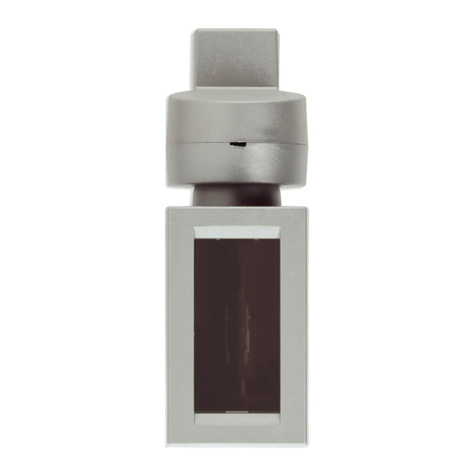
Vimar
Vimar 00801 instruction sheet
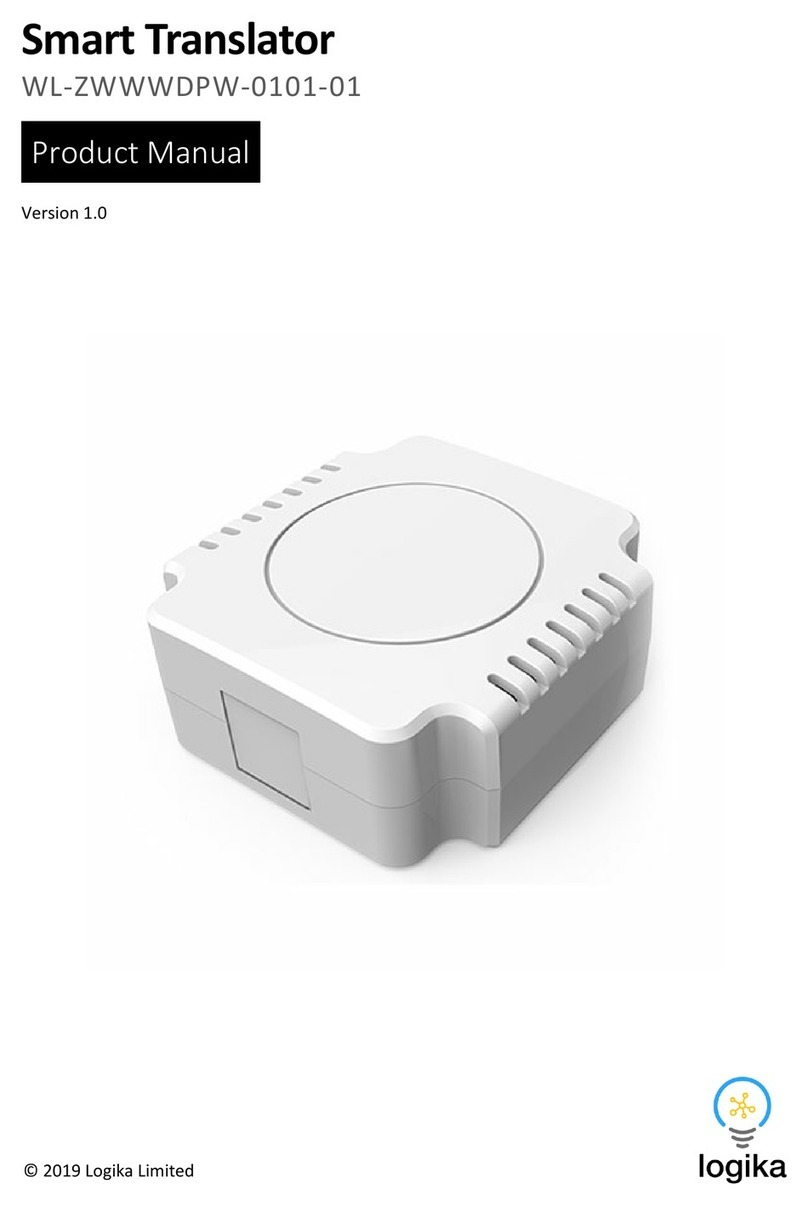
logika
logika Smart Translator WL-ZWWWDPW-0101-01 product manual
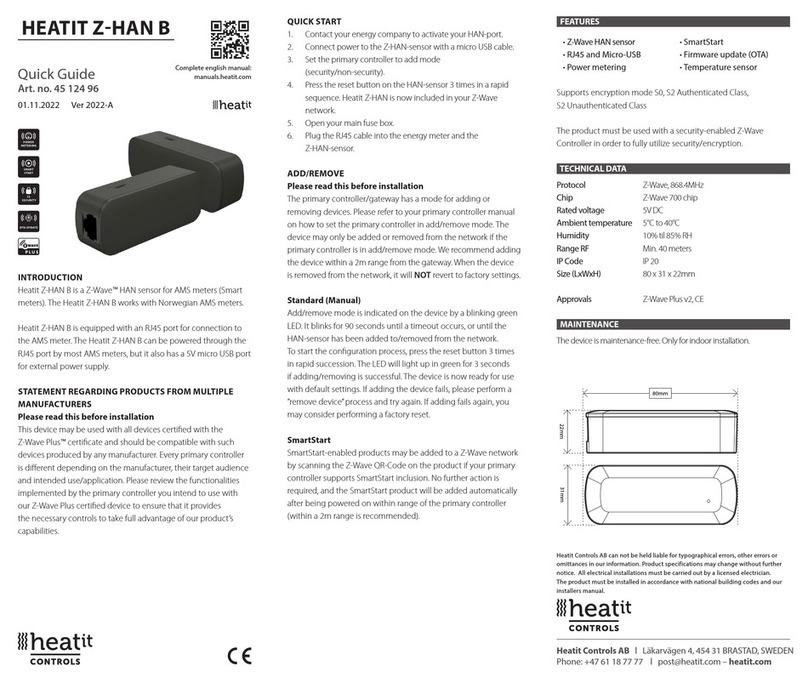
Heatit Controls
Heatit Controls HEATIT Z-HAN B quick guide
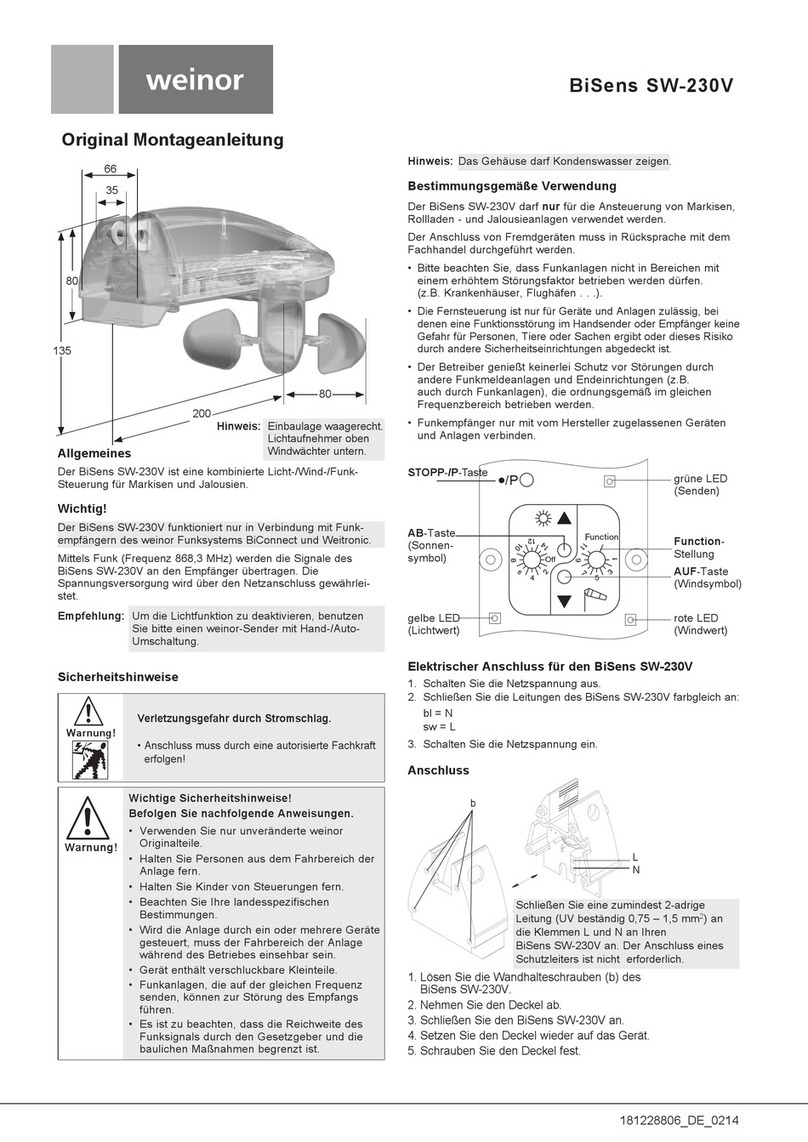
weinor
weinor BiSens SW-230V Original installation manual
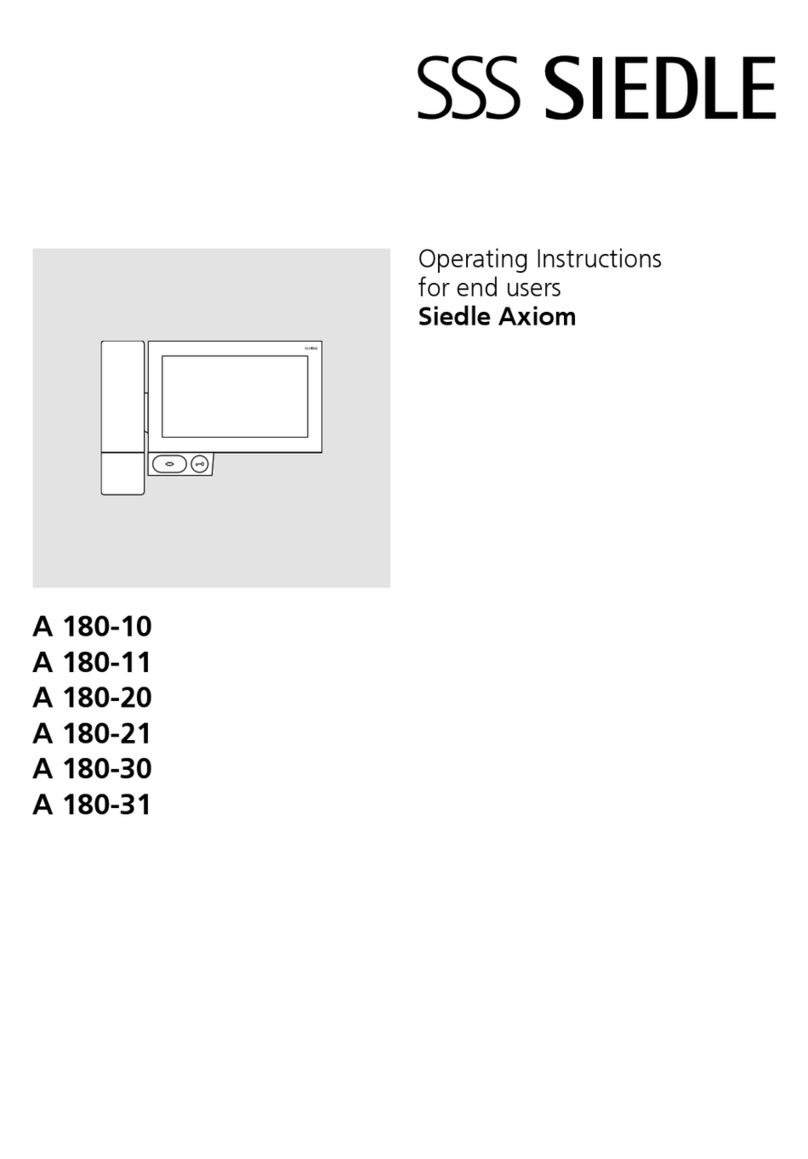
SSS Siedle
SSS Siedle Axiom operating instructions
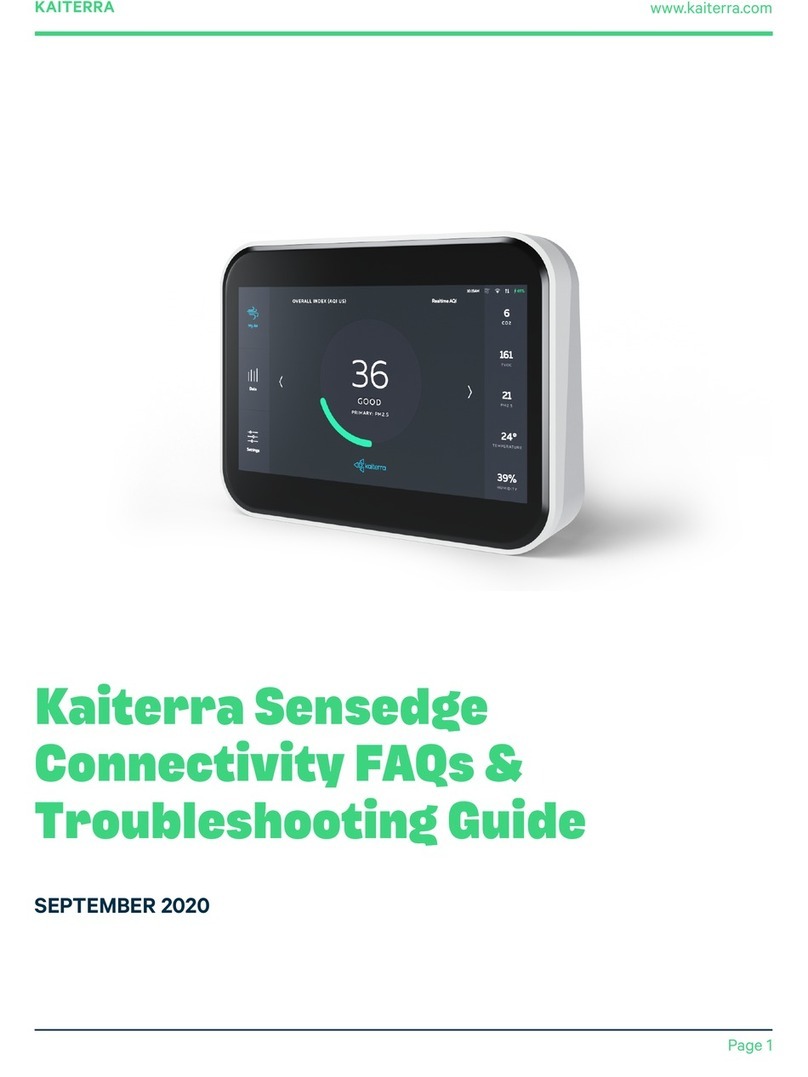
Kaiterra
Kaiterra Sensedge FAQ and Troubleshooting


